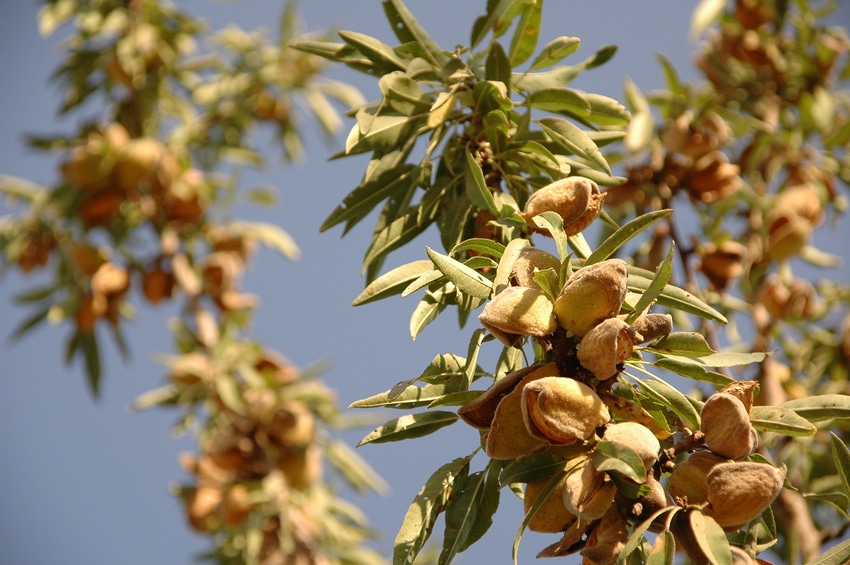
Chlorpyrifos, the active ingredient in the organophosphate pesticide known as Lorsban, will remain in the toolbox for almond and walnut growers in California.
Critical uses for the pesticide were identified in a University of California (UC) Integrated Pest Management (IPM) study by commodity group representatives who noted the lack of alternative control materials that could match chlorpyrifos efficacy.
Pest control advisors and UC IPM specialists often advocate the use of softer materials and new strategies including mating disruption for crop protection, but note there are specific instances where this restricted use material cannot be matched in effectiveness against invasive pests and endemic pest outbreaks and as a resistance management tool.
Unlike many new crop protection materials, chlorpyrifos also has established international registration status (maximum residue levels).
Chlorpyrifos has been used on a wide variety of crops for decades. It was re-registered by the Environmental Protection Agency (EPA) in 2006. It has come under scrutiny by environmental groups including the Pesticide Action Network North America and the Natural Resources Defense Council who claim serious adverse effects to human health and the environment.
EPA’s most recent Scientific Advisory Panel reported no mode of action found indicates chlorpyrifos exposure causes harm to humans or the environment if used under the restrictions in place.
Entomologist Lori Berger of the UC Statewide IPM Program said a critical use study definitely helped the EPA understand how and why chlorpyrifos is used in agriculture. It also showed why complete cancellation of all tolerances of chlorpyrifos could have potentially devastating effects on well-established IPM programs.
“For most of us in the field, this is common sense IPM, but for EPA to learn that growers and PCAs preferred to reserve the product for specific critical pests was quite illuminating to them. It put the concern about (the) loss of chlorpyrifos in context,” Berger said.
David Haviland, UC Cooperative Extension pest control farm advisor at Kern County, said alternatives to chlorpyrifos have been found in many cases, but there remain a few critical uses.
One is for the leaffooted bug in almonds. Pyrethrin products are effective in controlling leaffooted bug in the nymph stage, but continued use causes resistance to build up.
Haviland, a member of the Almond Crop Team in the UC IPM study, said growers are aware of the risks associated with chlorpyrifos and generally use it only when nothing else is effective or as a part of an IPM strategy.
“There are rules in place to mitigate the risks of using chlorpyrifos. It is an excellent and important tool. The goal is to have alternatives in the coming years for all organophosphate materials,” Haviland said.
Justin Nay, pest control advisor with Integral Ag at Durham, Calif., said there is concern about misuse of this broad-spectrum product, but if used under the strict guidelines it has value in managing insect resistance to other insecticides.
“It is the only tool we have against leaffooted bug and stink bug in almonds and in coddling moth and husk fly in walnuts,” Nay said. “We are seeing resistance to pyrethroids and their use can cause flare (up) in mites.”
The Chlorpyrifos Project facilitated specific commodities to evaluate their pest control options across a very wide variety of pests. Each crop team which went through this exercise including alfalfa, almond, citrus, and cotton representatives. They realized chlorpyrifos was clearly essential, but for other pests alternatives were available. The essential needs were constituted as “critical use pests.”
Berger said the effort of the commodity teams to work together and prepare the reports was extremely useful for EPA in its biological and economic impact analyses. In many cases, the reports were used as the foundation for comments for the public record.
About the Author(s)
You May Also Like




